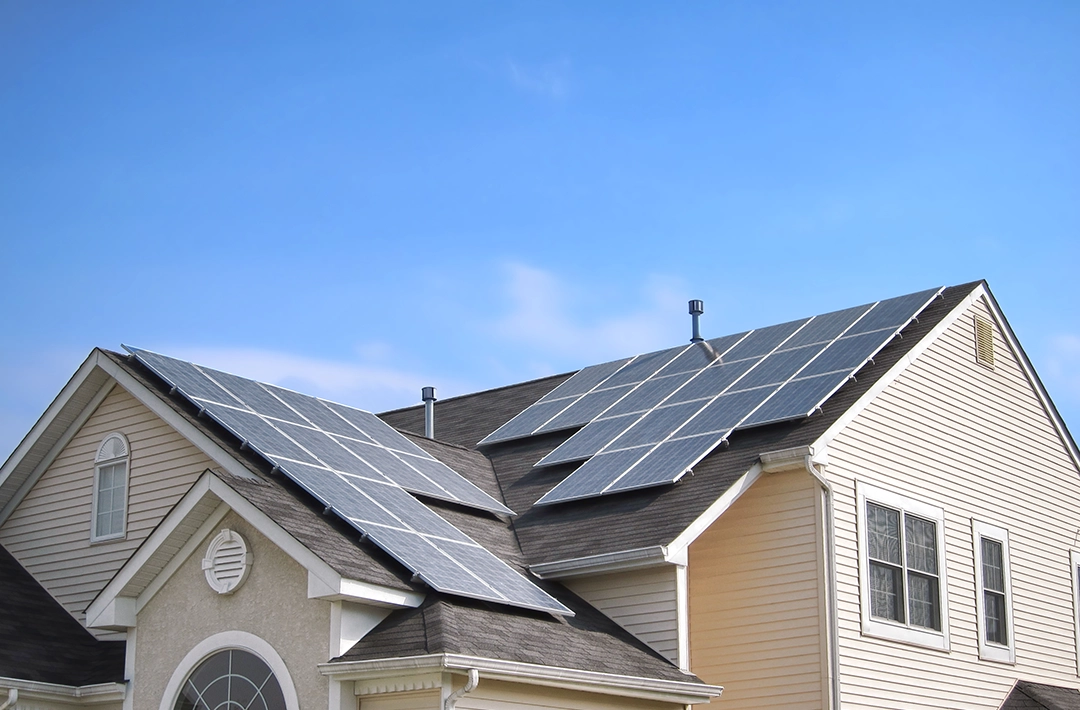Solar Tax Rebates & Incentives
Learn about how you can take advantage of CA’s current solar tax rebates & incentives in to save money on solar costs.
Federal tax incentives
Numerous countries, including the United States, provide federal tax credits enabling individuals and businesses to deduct a portion of their solar system costs from their taxes.
State programs
California's net energy metering policy allows solar panel owners to sell excess electricity back to the grid, offsetting costs and promoting renewable energy adoption.
*These programs are active and the information above is accurate as of January 2024.
Current CA solar incentives
Net-Energy-Metering 3.0
Net Energy Metering (NEM) is a program that allows solar system owners to receive credits for extra electricity they produce. When your solar panels generate more power than you use, the surplus is sent back to the grid, and you get credits on your utility bill. Later, when you need more electricity than your solar panels produce, you can use those credits to offset the cost. It’s like a two-way street for electricity, helping you save on your energy costs.
An Important update to California’s most recent policy NEM 3.0 is that utility customers are no longer compensated at the same rate for energy produced by solar that they are charged to use energy from the grid (like for like). The rates utility customers are compensated to send excess solar production has been decreased roughly 75%. This doesn’t make savings impossible, but pairing battery storage with solar is now necessary to make savings possible for California homeowners interested in solar adoption. To read more about the recent changes to California’s net metering policy visit NET METERING 3.0 EXPLAINED.
Self-Generation Incentive Program
The Self-Generation Incentive Program (SGIP) in California is a rebate initiative supporting the installation of distributed energy systems. It includes solar and energy storage technologies, promoting self-generation and grid resilience. Homeowners and businesses can receive financial incentives for adopting eligible technologies, contributing to a more sustainable and resilient energy infrastructure.
Solar Federal Investment Tax Credit (ITC)
The solar tax credit is a U.S. incentive that lets homeowners and businesses deduct a percentage of their solar system costs from federal taxes. The current rate is 30% for projects installed in 2023-2033. To qualify, you must own the system and the property where it’s installed. There’s no income limit, and it applies to both primary and secondary residences. Leased systems qualify, but the leasing company claims the credit, not the homeowner. For this reason, Solar Negotiators always recommends financing or cash options over PPAs/leased systems so that solar customers can take full advantage of the tax credit savings.
- Increased from 26% to 30% in 2023
- 30% until January 1st, 2033
- 22% until January 1st, 2034
- Set to expire completely by January 1st, 2035
How to apply for the California Solar Tax Credit
To find out if you qualify for the Federal Investment Tax Credit (ITC) for solar, it is best to meet in-person with a solar expert. This is because whether or not you qualify is completely dependent on how much a correctly-sized system will cost you. If you pay more than 30% of the total cost of the solar system in federal taxes, you may qualify to save thousands on your overall cost of solar installation. The best place to start is by meeting for an in-person consultation with a solar expert so you can ensure that you’re meeting with a reputable, honest solar provider and that the information you’re received is correct. Solar Negotiators is top-rated for the accuracy of our solar designs—ensuring you the highest possible energy savings. To get started today, click the link below.
There are no current incentives for roof replacement
Unfortunately, the costs of installing a new roof are not currently tax deductible. But, home improvement costs can raise your property value and potentially make it easier to sell down the road. However, Energy Star products were eligible for a tax refund from the 2019 to 2021, so if your new roof installation took place during that time period, you may be able to claim it. If considering a roof replacement, act now!
Solar adoption benefits
Energy rate stability
Solar helps avoid future rate increases by providing a stable, self-generated power source, shielding homeowners from utility price fluctuations and ensuring long-term energy cost control.
Grid independence
Grid independence with solar ensures reliable, self-sufficient power, reducing vulnerability to outages, promoting resilience, and enhancing energy security.
Cost reduction
Solar lowers energy costs by harnessing sunlight to generate electricity, reducing reliance on grid power and providing sustainable, cost-effective energy.
Energy rate stability
Solar helps avoid future rate increases by providing a stable, self-generated power source, shielding homeowners from utility price fluctuations and ensuring long-term energy cost control.
Grid independence
Grid independence with solar ensures reliable, self-sufficient power, reducing vulnerability to outages, promoting resilience, and enhancing energy security.
Check your eligibility
Am I eligible to claim the federal solar tax credit?
You may qualify for this tax credit if you meet the following conditions:
- Your solar PV system was installed between January 1, 2017, and December 31, 2034.
- The solar PV system is situated at your residence in the United States.
- Either:
- You own the solar PV system outright (purchased with cash or financed, but not leased or under a power purchase agreement).
- You acquired an interest in an off-site community solar project, with credited electricity not exceeding your home’s consumption. Note: The IRS issued a statement (refer to the provided link) allowing a specific taxpayer to claim a tax credit for such a purchase. However, this document (a private letter ruling or PLR) is not binding as precedent for other taxpayers. Additionally, purchasing electricity directly from a community solar project does not qualify.
- The solar PV system is either new or in its initial use, and the credit is applicable only to the “original installation” of the solar equipment.
Other frequently asked questions
Yes, if the federal tax credit for your solar installation exceeds your tax liability, you may be eligible for a refund. This situation is known as a “tax credit refund” or “excess tax credit.” But please remember that tax credits and their refundability can depend on the specific legislation and regulations in place, so it’s crucial to stay informed and seek professional guidance to maximize the benefits of solar tax credits.
The federal tax credit for solar energy systems typically includes the cost of eligible energy storage systems (batteries) when installed in conjunction with a solar photovoltaic (PV) system. However, there are certain criteria and limitations to consider:
Qualifying Criteria:
- The energy storage system must be charged primarily by the solar panels, and its purpose should be to store energy for use during periods when the solar system is not producing electricity (such as during nighttime or cloudy days).
Percentage Limit:
- The federal tax credit covers a percentage of the total cost of the solar energy system, including eligible components like solar panels and energy storage. The percentage may vary, so it’s essential to check the current tax laws for the specific credit rate.
Eligible Expenses:
- Generally, eligible expenses for the tax credit include the costs associated with the purchase and installation of the solar panels, inverters, and energy storage system. It’s crucial to keep detailed records of these expenses for tax documentation.
Residential vs. Commercial Credits:
- The availability and terms of tax credits can differ for residential and commercial installations. Make sure to check the specific rules that apply to your situation.
IRS Guidelines:
- The Internal Revenue Service (IRS) provides guidelines and documentation requirements for claiming the federal tax credit. Refer to the latest IRS guidance or consult with a tax professional to ensure compliance.
The Federal Solar Investment Tax Credit (ITC) doesn’t involve direct payments to individuals. Instead, it’s a tax credit that allows you to deduct a percentage of the cost of installing a solar energy system from your federal taxes. As January 2024, you typically claim the credit when you file your federal income tax return for the year in which the solar system was installed. Similar to a typical tax refund, if you are owed anything you will receive a check or direct deposit sometime after filing your taxes in Spring.
If there have been any changes to the program or payment structures since then, it’s advisable to check the latest information on the official IRS website or consult with a tax professional for the most accurate and up-to-date details.
Homeowners who have a Power Purchase Agreement (PPA) for their solar panel system may not be eligible for the Federal Solar Investment Tax Credit (ITC). The tax credit is typically available to individuals who own their solar systems.
In a PPA, the solar provider owns and maintains the solar panels, and the homeowner agrees to purchase the electricity generated by the system. Since the homeowner doesn’t own the system in this arrangement, they may not qualify for the ITC.
However, tax laws can change, and it’s essential to check the latest regulations or consult with a tax professional to get the most accurate and up-to-date information based on your specific situation and the current tax laws.
Read more about solar rebates & incentives

Inside the Federal Tax Credit
The Federal Solar Investment Tax Credit (ITC) is one of the most significant incentives for homeowners...

NEM 3.0, California's Changing Solar Policy
This new plan is an attempt to incentivize owners of solar systems to invest in solar batteries...

4 Reasons to Go Solar in California
Here are four reasons why you should make the switch if you live in the Sunshine State...

Inside the Federal Tax Credit
The Federal Solar Investment Tax Credit (ITC) is one of the most significant incentives for homeowners...

NEM 3.0, California's Changing Solar Policy
This new plan is an attempt to incentivize owners of solar systems to invest in solar batteries...

